
PNY GeForce GTX 770 XLR8 OC 2GB Review
Manufacturer: PNYUK price (as reviewed): £329.72 (inc VAT)
US price (as reviewed): $419.99 (ex Tax)
Although AMD's R9 and R7 "Volcanic Islands" GPUs are soon to change the situation, Nvidia has been enjoying having the top tier of single GPU performance to itself for quite a while now - since the release of the GTX Titan in fact. But not only this, as well as having top spot Nvidia can also claim second and third position as its GTX 780 3GB and GTX 770 2GB cards still outperform AMD's top card, the Radeon HD 7970 GHz Edition. All of which means there's plenty of reason to be interested in new board partner variations on the GTX 770, if you're in the market for a ~£300 GPU.
PNY is just one of Nvidia's board partners to offer up its own version of the GTX 770 2GB, specifically in its XLR8 Enthusiast Edition series. As well as a custom cooler, the card features overclocks to both the memory and the core speeds. Rather confusingly, PNY also offers a stock variant of the GTX 770 2GB, as well as both stock speed and overclocked versions of the card's 4GB SKU.
To briefly recap, the GTX 770 utilises the same fully enabled GK104 GPU as GTX 680 cards. This 28nm part has the full roster of four Graphics Processing Clusters (and thus four rastersisers) divided into two Streaming Multiprocessors a piece. As each of these SMs contains a single tesselator and 192 stream processors, you're left with 8 of the former and 1,536 of the latter. Rounding out the specs are 128 texture units, alongside 32 ROPs and four 64-bit memory controllers. Unlike the GTX 680, Nvidia's Boost 2.0 technology is also supported by the GTX 770, which leads to better granular management of the card's auto overclocking capabilities.
For its overclocked GTX 770 2GB, PNY has taken the core clock up from 1,046MHz to 1,150MHz, a 10 percent increase. The guaranteed boost clock has also risen as a result from 1,085MHz to 1,202MHz. Meanwhile, the 2GB of GDDR5 memory has been tweaked from 7GHz to 7.2GHz; a more modest increase but still one that's appreciated. Along with the full 256-bit memory interface, this equates to 230.4GB/sec of total memory bandwidth. As we hinted at before, it's nice to see that the memory hasn't been forgotten about in a board partner card, especially given how fast it already runs on stock speed GTX 770 cards.
The pair of dual link DVI connectors, single HDMI output and DisplayPort are all carried over from the reference card, as are the usual pair of SLI connectors. The 8-pin and 6-pin PCIe power connections are stacked atop one another rather than being side by side. The non-standard PCB measures 255mm, with the cooler's overhang taking the total length to 270mm.
While reference cards sported the same lovely aluminium cooler as the GTX Titan, board partners have been left to use ones of their own designs. For its overclocked models, PNY uses a black shroud with a set of yellow racing stripes. It feels nice and solid thanks to its all metal design. However the design does rely on good in-case airflow as a lot of the card's hot air will escape back into the case, rather than through the IO plate. Twin 90mm downdraft fans provide cooling for the huge aluminium heatsink, which extends the full length of the card and is fed by five copper heat pipes that draw heat away from the GPU. This sort of downdraft design has proved to be better generally for GPU temps but you will need that case airflow.
The VRMS and memory chips are not cooled by this main HSF setup but instead have small heatsinks covering them which pick up some of the airflow from the downdraft fans. Although afixed by thermal pads these 'sinks are also screwed into place so the pads could be replaced by higher performance thermal paste if desired.
The power circuitry itself uses five phases for the GPU plus two for the memory, making for a a 7+1 phase power for the card overall.
So with a decent looking cooler and hefty factory overclock, there should be plenty to like about this card, but how does it perform...
Specifications
- Graphics processor Nvidia GeForce GTX 770 2GB, 1,150MHz (boosting to 1,202MHz)
- Pipeline 1,536 stream processors, 128 texture units, 32 ROPs
- Memory 2GB GDDR5, 7.2GHz effective
- Bandwidth 230.4GB/sec, 256-bit interface
- Compatibility DirectX 11.1, OpenGL 4.3
- Outputs/Inputs Dual Link DVI-I, Dual Link DVI-D, HDMI, DisplayPort
- Power connections 1 x 8-pin, 1 x 6-pin PCI-E, top-mounted
- Size 270mm, dual slot
- Warranty Three years

MSI MPG Velox 100R Chassis Review
October 14 2021 | 15:04

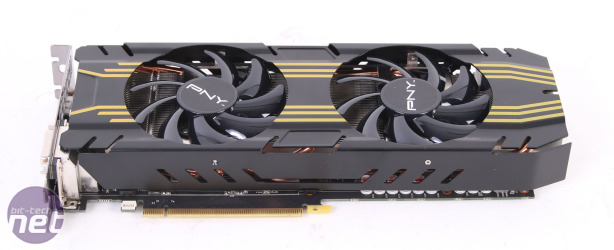
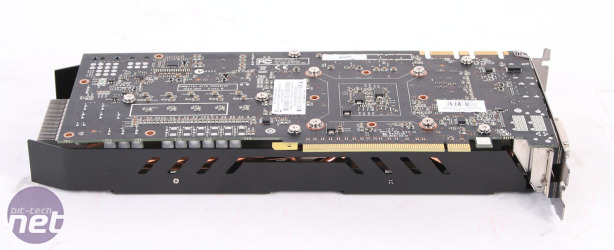
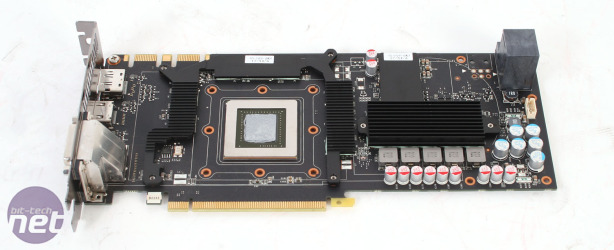
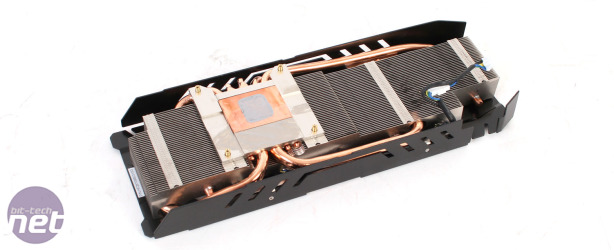

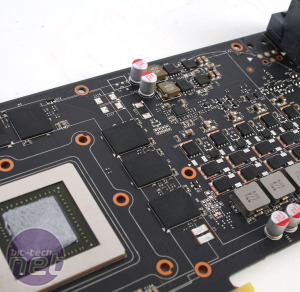







Want to comment? Please log in.